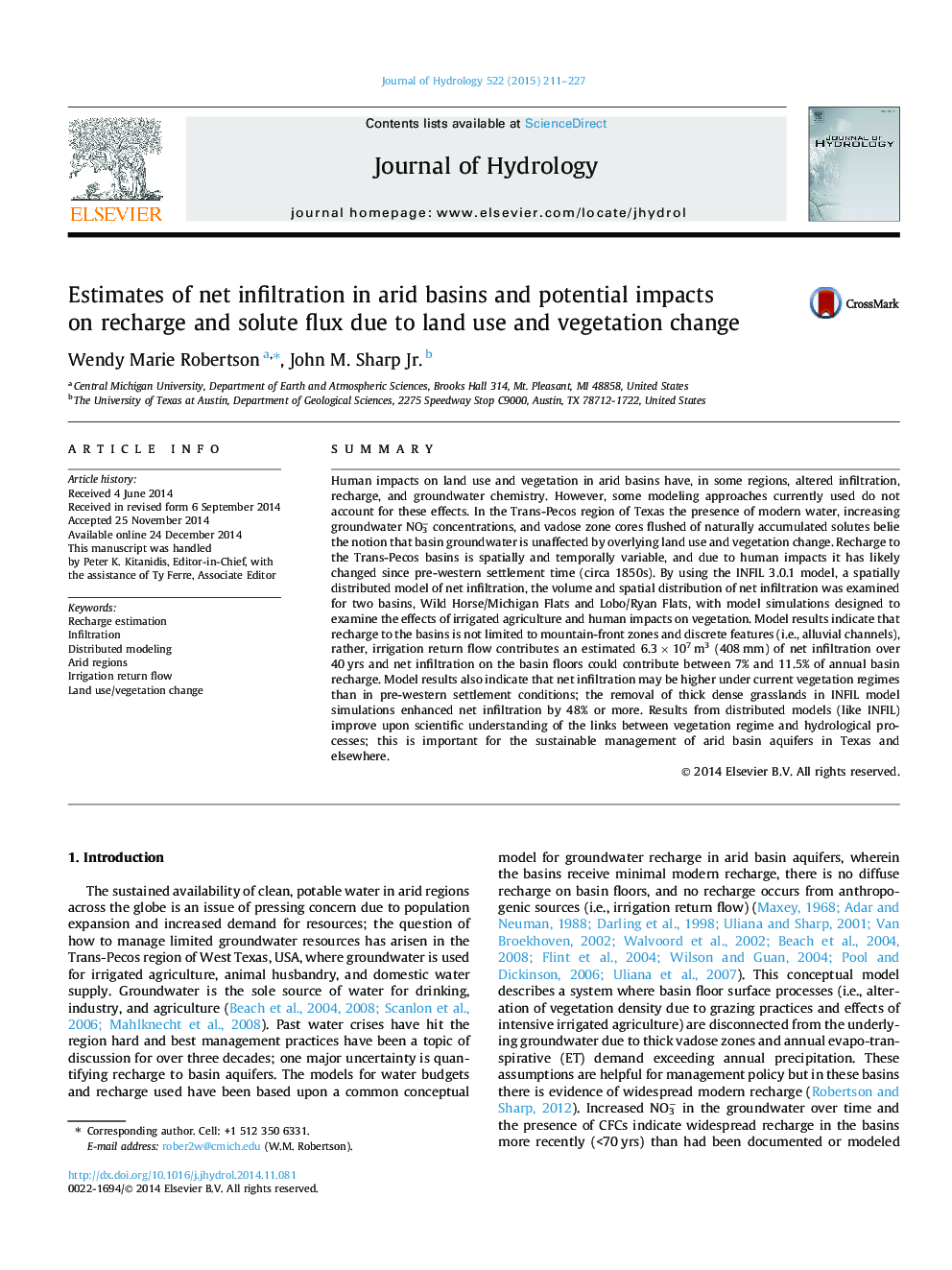| کد مقاله | کد نشریه | سال انتشار | مقاله انگلیسی | نسخه تمام متن |
|---|---|---|---|---|
| 6411287 | 1629928 | 2015 | 17 صفحه PDF | دانلود رایگان |
- Distributed models of net infiltration indicate recharge to arid basin aquifers.
- Basin recharge via irrigation return flow is indicated by distributed models.
- Infiltration may have increased over time due to changes in vegetation regime.
- Recharge through the basin floors can result in long-term risk to water quality.
- Distributed models in arid basins improve understanding and management of aquifers.
SummaryHuman impacts on land use and vegetation in arid basins have, in some regions, altered infiltration, recharge, and groundwater chemistry. However, some modeling approaches currently used do not account for these effects. In the Trans-Pecos region of Texas the presence of modern water, increasing groundwater NO3â concentrations, and vadose zone cores flushed of naturally accumulated solutes belie the notion that basin groundwater is unaffected by overlying land use and vegetation change. Recharge to the Trans-Pecos basins is spatially and temporally variable, and due to human impacts it has likely changed since pre-western settlement time (circa 1850s). By using the INFIL 3.0.1 model, a spatially distributed model of net infiltration, the volume and spatial distribution of net infiltration was examined for two basins, Wild Horse/Michigan Flats and Lobo/Ryan Flats, with model simulations designed to examine the effects of irrigated agriculture and human impacts on vegetation. Model results indicate that recharge to the basins is not limited to mountain-front zones and discrete features (i.e., alluvial channels), rather, irrigation return flow contributes an estimated 6.3Â ÃÂ 107Â m3 (408Â mm) of net infiltration over 40Â yrs and net infiltration on the basin floors could contribute between 7% and 11.5% of annual basin recharge. Model results also indicate that net infiltration may be higher under current vegetation regimes than in pre-western settlement conditions; the removal of thick dense grasslands in INFIL model simulations enhanced net infiltration by 48% or more. Results from distributed models (like INFIL) improve upon scientific understanding of the links between vegetation regime and hydrological processes; this is important for the sustainable management of arid basin aquifers in Texas and elsewhere.
Journal: Journal of Hydrology - Volume 522, March 2015, Pages 211-227
